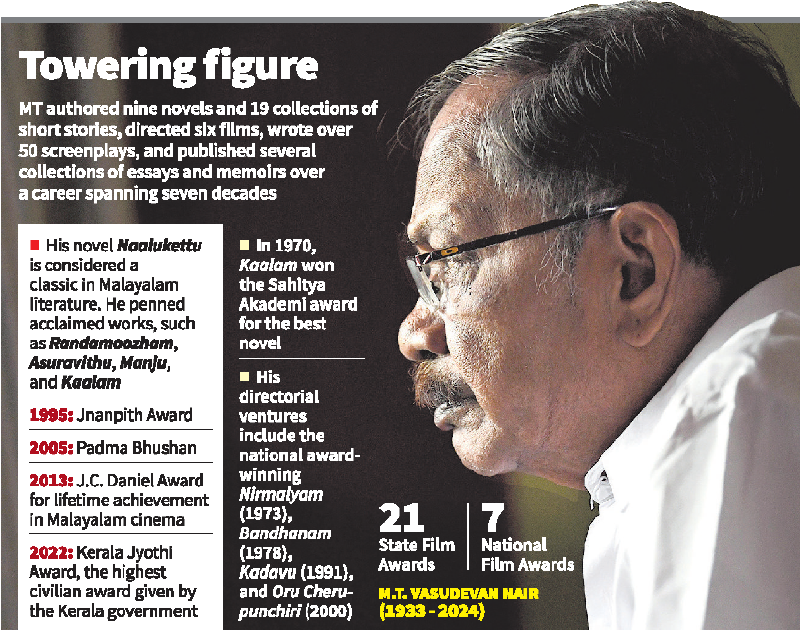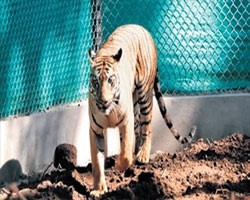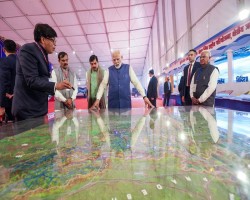SSC Current Affairs
TABLE OF CONTENTS |
| Polity and Governance |
|---|
|
|
|
Tigress Zeenat, a three-year-old feline, was translocated from Maharashtra's Tadoba–Andhari Tiger Reserve to Odisha's Similipal Tiger Reserve on November 14, 2024, as part of a genetic diversification initiative.
After her release into the wild on November 24, Zeenat embarked on an extensive journey, traversing approximately 200 kilometers over two weeks. Her path led her through Jharkhand and into West Bengal's Purulia district, where she was last observed. Despite these measures, she continues to move approximately 20-25 kilometers each night, making her difficult to track and capture. Her current whereabouts remain uncertain, and efforts to safely return her to Similipal are ongoing |
| National |
|
|
|
Why in the news?
The Ken-Betwa Link Project (KBLP) is a significant initiative under India's National Perspective Plan for interlinking rivers, aiming to address water scarcity and boost agricultural productivity in the Bundelkhand region, spanning parts of Madhya Pradesh and Uttar Pradesh. Project Overview: Objective: To transfer surplus water from the Ken River to the Betwa River, thereby enhancing irrigation, providing drinking water, and generating hydropower. Components: The project involves the construction of the Daudhan Dam and a 2.5-kilometer canal to facilitate water transfer. Financial Outlay: The project is estimated at ₹44,605 crore (approximately $6 billion). Key Benefits: Irrigation: The project aims to irrigate about 1.1 million hectares of land across 10 districts in Madhya Pradesh and Uttar Pradesh, thereby enhancing agricultural productivity. Drinking Water Supply: It is expected to provide drinking water to approximately 6.2 million people in the region. Hydropower Generation: The project includes provisions for generating 103 megawatts of hydropower and 27 megawatts of solar power. Recent Developments: On December 25, 2024, Prime Minister Narendra Modi laid the foundation stone for the Ken-Betwa River Linking National Project in Khajuraho, Madhya Pradesh. During the ceremony, he emphasized the project's potential to transform the water landscape of Bundelkhand, addressing long-standing issues of water scarcity and contributing to the region's socio-economic development. Environmental and Social Considerations: The project has faced scrutiny over potential environmental impacts, particularly concerning the submergence of areas within the Panna Tiger Reserve, which could affect local biodiversity, including tiger habitats and vulture nesting sites. Critics have also raised concerns about the displacement of communities and the project's overall ecological footprint. Conclusion: The Ken-Betwa Link Project represents a significant effort to address water scarcity and promote development in the Bundelkhand region. While it promises substantial benefits in terms of irrigation, drinking water supply, and power generation, it also necessitates careful consideration of environmental and social impacts to ensure sustainable and equitable outcomes. |
|
|
|
About Ken and Betwa Rivers:
The Ken and Betwa Rivers are two important tributaries of the Yamuna River in central India. Both rivers originate in Madhya Pradesh and flow through parts of Uttar Pradesh, playing significant roles in the region's water resources and ecology. Ken River: Origin: The Ken River originates near the village of Ahirgawan in the Katni district of Madhya Pradesh. Course: It flows for about 427 kilometers, primarily through Madhya Pradesh and Uttar Pradesh. It joins the Yamuna River near Chilla village in Uttar Pradesh. Key Features: Panna Tiger Reserve: The river flows through the Panna Tiger Reserve, providing vital water resources to this biodiversity-rich area. Cultural Significance: The Ken River basin has archaeological sites and is culturally significant for communities in the region. Challenges: The Ken River is seasonal, with flow varying drastically between monsoon and dry seasons. Betwa River: Origin: The Betwa River originates in the Vindhya range, near Hoshangabad district in Madhya Pradesh. Course: It flows for about 590 kilometers, passing through Madhya Pradesh and Uttar Pradesh. The river merges with the Yamuna near Hamirpur in Uttar Pradesh. Key Features: Irrigation: The Betwa River supports extensive irrigation in the Bundelkhand region, a drought-prone area. Cultural and Historical Significance: Orchha, a town on the Betwa River, is known for its heritage sites and scenic beauty. Dams and Projects: Major dams like the Rajghat Dam and Matatila Dam have been constructed on the Betwa to support agriculture and water management. Both rivers support agriculture, provide drinking water, and sustain biodiversity in the region. However, seasonal variability and ecological concerns, including the potential impact of developmental projects like the Ken-Betwa Link, highlight the need for sustainable water management. |
| Deaths |
|
|
|
M.T. Vasudevan Nair, a luminary in Malayalam literature and cinema, passed away on December 25, 2024, at the age of 91.
Early Life and Literary Contributions: He worked as a temporary teacher in schools run by the then Malabar District Education Board in Pattambi and Chavakkad, and also at M.B. Tutorials, Palakkad, before joining the Mathrubhumi weekly as a sub-editor in Kozhikode in 1956. He later worked as its editor, nurturing a number of future writers in Malayalam such as Punathil Kunjabdulla and N.S. Madhavan. MT’s first break in literature came when Valarthumrigangal, one of his short stories set against the backdrop of a circus written during college days, won the first prize in a competition conducted by the New York Herald Tribune, Mathrubhumi, and Hindustan Times. Naalukettu, his first major work published in 1958 that dealt with the decaying ancestral Nair feudal family system, won the Kerala Sahitya Akademi award for best novel. In 1970, Kaalam won the Sahitya Akademi award for the best novel. Gopuranadayil won the Kerala Sahitya Akademi award for drama in 1982, and Swargam Thurakkunna Samayam, for the best short story in 1986. Randamoozham, the mythological novel revolving around Bhima, won the Vayalar Award in 1985. Some of his other major works include Manju, a novella, and Asuravithu, and Arabipponnu, written along with N.P. Mohammed and short stories such as Kuttiyedathi, Vaarikuzhi, Pathanam, Ninte Ormakku, Vanaprastham, and Sherlock. Popular movies: MT’s foray into films happened when he wrote the screenplay for Murappennu (1965), based on one of his short stories. This was followed by a string of critically acclaimed and popular movies such as Oru Vadakkan Veeragatha, Sadayam, Parinayam, Olavum Theeravum, Oppol, and Perumthachan, which bagged State and national awards in the best screenplay and best film categories. His directorial ventures are the national award-winning Nirmalyam (1973), Bandhanam (1978), Vaarikuzhi (1982), Manju (1983), Kadavu (1991), and Oru Cherupunchiri (2000). MT’s collection of essays feature in Kathikante Kala, Hemingway: Oru Mukhavura, Kathikante Panippura, and Kannanthalippookalude Kalam. His travelogue is titled Alkkoottathil Thaniye. Manikyakkallu, Thanthrakkari and Daya Enna Penkutty are his novels written for children. Awards won by M.T. Vasudevan Nair: MT was honoured with the Jnanpith Award in 1995, the Kerala government’s Ezhuthachan Award in 2011, and the Padma Bhushan in 2005. The University of Calicut and the Mahatma Gandhi University have conferred upon him doctorates. 
|
|
<< 25-Dec-24
|
|
|


